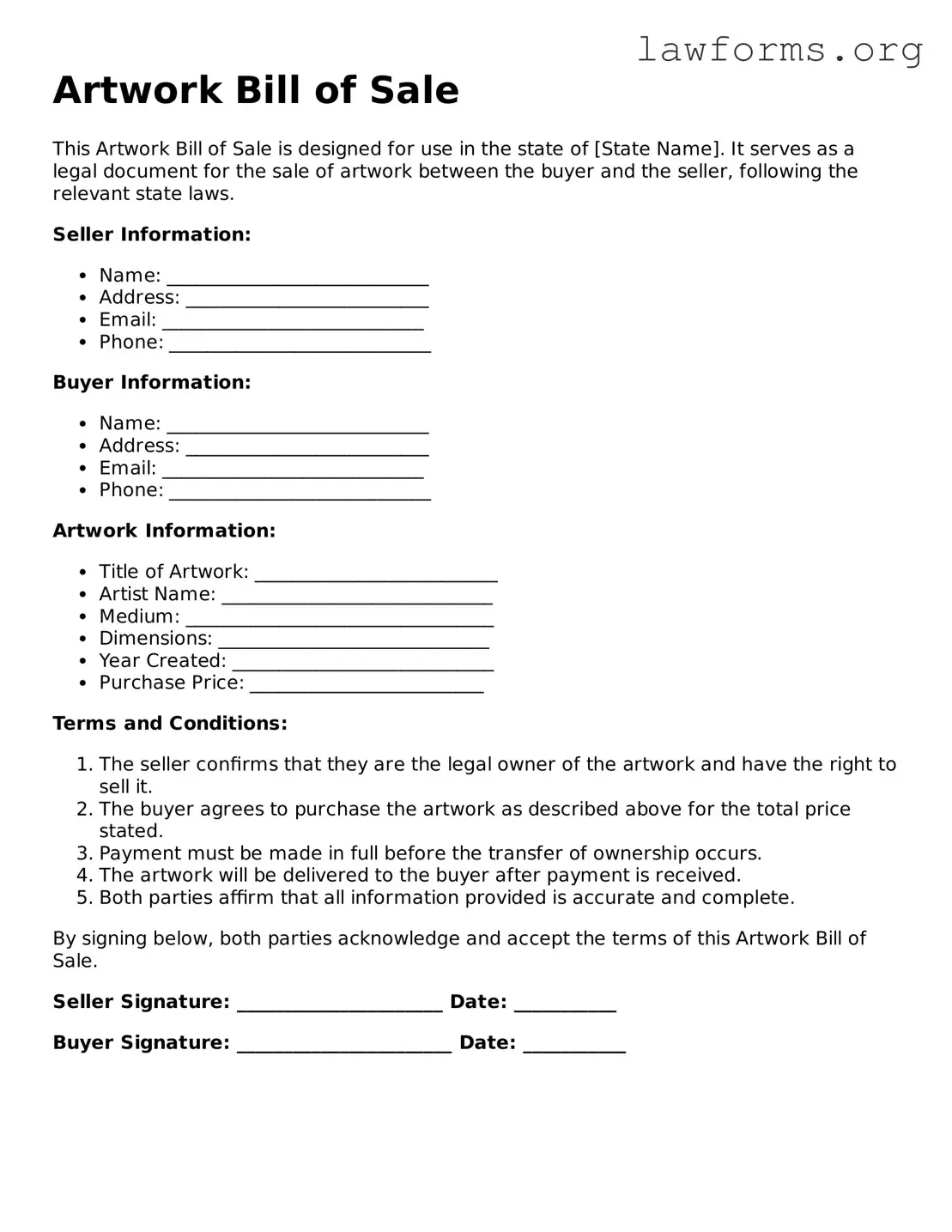Artwork Bill of Sale
This Artwork Bill of Sale is designed for use in the state of [State Name]. It serves as a legal document for the sale of artwork between the buyer and the seller, following the relevant state laws.
Seller Information:
- Name: ____________________________
- Address: __________________________
- Email: ____________________________
- Phone: ____________________________
Buyer Information:
- Name: ____________________________
- Address: __________________________
- Email: ____________________________
- Phone: ____________________________
Artwork Information:
- Title of Artwork: __________________________
- Artist Name: _____________________________
- Medium: _________________________________
- Dimensions: _____________________________
- Year Created: ____________________________
- Purchase Price: _________________________
Terms and Conditions:
- The seller confirms that they are the legal owner of the artwork and have the right to sell it.
- The buyer agrees to purchase the artwork as described above for the total price stated.
- Payment must be made in full before the transfer of ownership occurs.
- The artwork will be delivered to the buyer after payment is received.
- Both parties affirm that all information provided is accurate and complete.
By signing below, both parties acknowledge and accept the terms of this Artwork Bill of Sale.
Seller Signature: ______________________ Date: ___________
Buyer Signature: _______________________ Date: ___________
